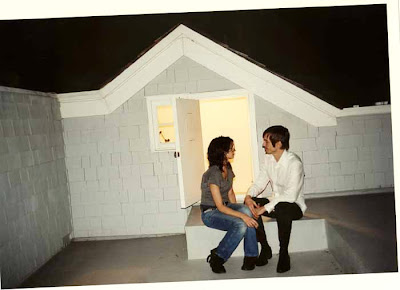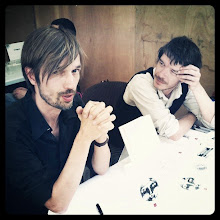
The Phono festival where I played the last week is in Odense, a city on the Fyn island, which is no longer an island: an amazing bridge links up Fyn and the Zealand island, where Copenhagen stands. Odensee is not a small city, but it is the typical town from which young people need to escape when they approach 20. The nice story about Phono is that it is mostly run by people who moved to Copenhagen, but who want to breathe the capital life into their hometown. Having one day off before coming back to France, I spent it visiting Odense, where I really enjoyed an exhibition of old Danish landscape paintings at the Fyn Kunstmuseum. Then, approaching the house of H.C. Andersen, the prolific fairy tale writer who stayed a bachelor all his life, I had a first movement of rejection, since the museum must be like an Eiffel tower, the name of Andersen itself being almost a curse in Denmark, like Lars Von Trier. Eventually I came in and didn't regret it. The display is great; I visited one huge room with all Andersen's traductions, and that makes an incredible Babel tower room from many periods & diverse cultures.
Having one day off before coming back to France, I spent it visiting Odense, where I really enjoyed an exhibition of old Danish landscape paintings at the Fyn Kunstmuseum. Then, approaching the house of H.C. Andersen, the prolific fairy tale writer who stayed a bachelor all his life, I had a first movement of rejection, since the museum must be like an Eiffel tower, the name of Andersen itself being almost a curse in Denmark, like Lars Von Trier. Eventually I came in and didn't regret it. The display is great; I visited one huge room with all Andersen's traductions, and that makes an incredible Babel tower room from many periods & diverse cultures.  Andersen was also an artist, making notebooks for children, filled with collages, drawings, papercuts. He was a master at it. Andy Warhol was fascinated by the figure of Andersen, but also by his papercuts. That fascination is a cue to understand the psyché of the American genius: something related to childhood, innocence & amorality (most of the fairy tales have no moral).
Andersen was also an artist, making notebooks for children, filled with collages, drawings, papercuts. He was a master at it. Andy Warhol was fascinated by the figure of Andersen, but also by his papercuts. That fascination is a cue to understand the psyché of the American genius: something related to childhood, innocence & amorality (most of the fairy tales have no moral).
It's time to read Andersen, now.










